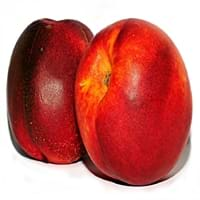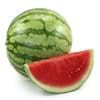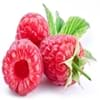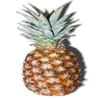Health Benefits
Arthritis prevention, Asthma treatment, Cancer prevention, Heart care, Prevents macular degeneration, Prevents rheumatoid
Cancer prevention, Heart care
General Benefits
Anti-inflammatory properties, Boosts immune system, Digestive aid, Healing of wounds, Maintains healthy cholesterol level, Strengthens bones
Anti oxidant properties, Boosts immune system, Digestive aid, Eye care, Helps in weight loss, Maintains healthy cholesterol level
Skin Benefits
Anti-aging benefits, Hydrates skin, Skin revitalization, Treatment of acne, Treatment of dark spots
Anti-aging benefits, Reduces wrinkles, Skin rejuvenation
Hair Benefits
Good conditioner, Promotes longer and healthier hair, Softening mask, Treatment of dandruff
Protects hair
Allergy Symptoms
Abdominal pains, Carotenemia on excessive consumtion, Latex Allergy
Anaphylaxis, Asthma, Breathing difficulty, Diarrhea, Hives, Itching, Itchy eyes, Skin rash, Sneezing, Swelling of mouth, tongue or lips, Tingling sensation in mouth, Vomiting, Watery eyes, Wheezing
Side Effects
Allergic reaction, Skin problems, Possibly unsafe during pregnancy
Allergic reaction, Headache, Nausea
Best Time to Eat
As a snack in the late afternoon, Don't consume at night and before bed, Don't eat after meal
Best if taken as a breakfast (or empty stomach), As a snack in the late afternoon, Eat the fresh ones, avoid mixing with any other foods, don't eat after meal., Morning time (before lunch)
Vitamin B5 (Pantothenic Acid)
Vitamin C (Ascorbic Acid)
Vitamin K (Phyllochinone)
Calories in Fresh Fruit with Peel
Not Available
Calories in Fresh Fruit without Peel
Not Available
Calories in Frozen Form
Not Available
Calories in Canned Form
Not Available
Type
Melon, Tree fruit
Tree fruit
Season
All seasons
Autumn, Summer
Varieties
Coorg Honey Dew, Pusa Dwarf, Pusa Giant, Pusa Majesty, Pusa Delicious, Pusa Dwarf, Solo, Ranchi, Taiwan-785 and Taiwan-786
Arctic Jay, Artic Rose, Artic Star, Armking, Desert Dawn, Fairlane, Fantasia, Silver Lode, Snow Queen, Stanwick and Stark Sunglo
Color
Orange, Yellow
Orange, Pink, Red, Yellow
Inside Color
Orange
Yellow
Taste
Luscious, Sweet
Sweet
Origin
Mexico, Central America
China
Soil Type
Rocky, Sandy, Well-drained
Sandy loam
Climatic Conditions
Warm, Without frosts
Sunny, Warm
Facts about
- Papaya seeds show contraceptive effects in male monkeys.
- Their seeds are used as a replacement for black pepper in some nations due to peppery taste.
- Papaya is known by funny names like paw paw or papaw and the mamao.
- The name ‘nectarine’ is with reference to the sweet food the gods eat, ‘nectar’.
- Nectarines are sometimes called ‘shaved peaches’ because their skin is smooth with no fuzz.
Spirits
Yes
Not Available
Other Countries
Brazil, Indonesia, Mexico, Nigeria
Argentina, Chile, Egypt, Greece, Iran, Italy, Spain, Turkey, United States of America
Top Importer
United States of America
Germany
Top Exporter
Mexico
Spain
Botanical Name
Carica papaya
Prunus persica
Synonym
Not Available
Not Available
Subkingdom
Tracheobionta
Tracheobionta
Division
Magnoliophyta
Magnoliophyta
Class
Magnoliopsida
Magnoliopsida
Subclass
Dillenhidae
Rosidae
Order
Brassicales
Rosales
Family
Caricaceae
Rosaceae
Species
C. papaya
P. persica
Generic Group
Papaya
Rose
Compare Papaya and Nectarine
It is important compare Papaya and Nectarine as both the fruits have a different nutritional value. Their comparison can be done on the basis of their vitamin and mineral content, calories, benefits as well as characteristics, making it easier for us to choose the best fruit for our diet. Their general health benefits are as follows:
Papaya Benefits: anti-inflammatory properties, boosts immune system, digestive aid, healing of wounds, maintains healthy cholesterol level and strengthens bones.
Nectarine Benefits: anti oxidant properties, boosts immune system, digestive aid, eye care, helps in weight loss and maintains healthy cholesterol level.
Fruits are also used as a remedy for various hair problems. The hair benefits of Papaya are: good conditioner, promotes longer and healthier hair, softening mask and treatment of dandruff and hair benefits of Nectarine are: protects hair. Some fruits are known to cause allergic reactions. The allergy symptoms of first fruit are: abdominal pains, carotenemia on excessive consumtion and latex allergy and the symptoms of second fruit are: anaphylaxis, asthma, breathing difficulty, diarrhea, hives, itching, itchy eyes, skin rash, sneezing, swelling of mouth, tongue or lips, tingling sensation in mouth, vomiting, watery eyes and wheezing. Get sorted Papaya vs Nectarine comparison with the help of fruit comparison tool by fruitvs.com.









